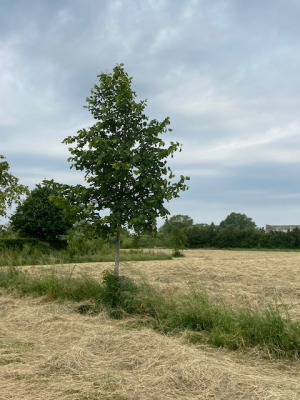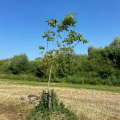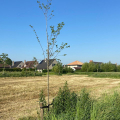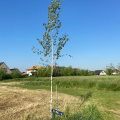Solitary trees
PrintSolitary trees
Solitary trees on the Roularta site get maximum opportunities:
-
Solitary trees get a full crown, which is equivalent to an equally beautiful root structure, ideal for retaining water.
-
The trees were selected for their flowering period for the bees, butterflies and other winged creatures, but also for their leaf colour throughout the seasons.
-
These solitary trees will soon contrast with the forest and the Urban Forestry (mini-forest) that will be planted, all together over 1.5 ha of forest that represents a planting of 12,000 trees.
-
Lime trees (Tilia platyphyllos), very bee-friendly
-
Willows
-
Oak (Quercus robur)
-
Amber tree (Liquidambar styraciflua)
-
Japanese mulberry (Morus bombycis), early bloomer, already in March
-
Persian ironwood (Parrotia persica), from the witch hazel family, flowers already from January to March
-
Acacia (Robinia pseudoacacia), an exotic, but very bee-friendly with lots of nectar
-
Spiny wood (Betula utilis)
-
Walnut (Juglans regia)
-
Judas tree (Cercis siliquastrum), multi-stemmed shrub that flowers abundantly in spring
-
and other species



